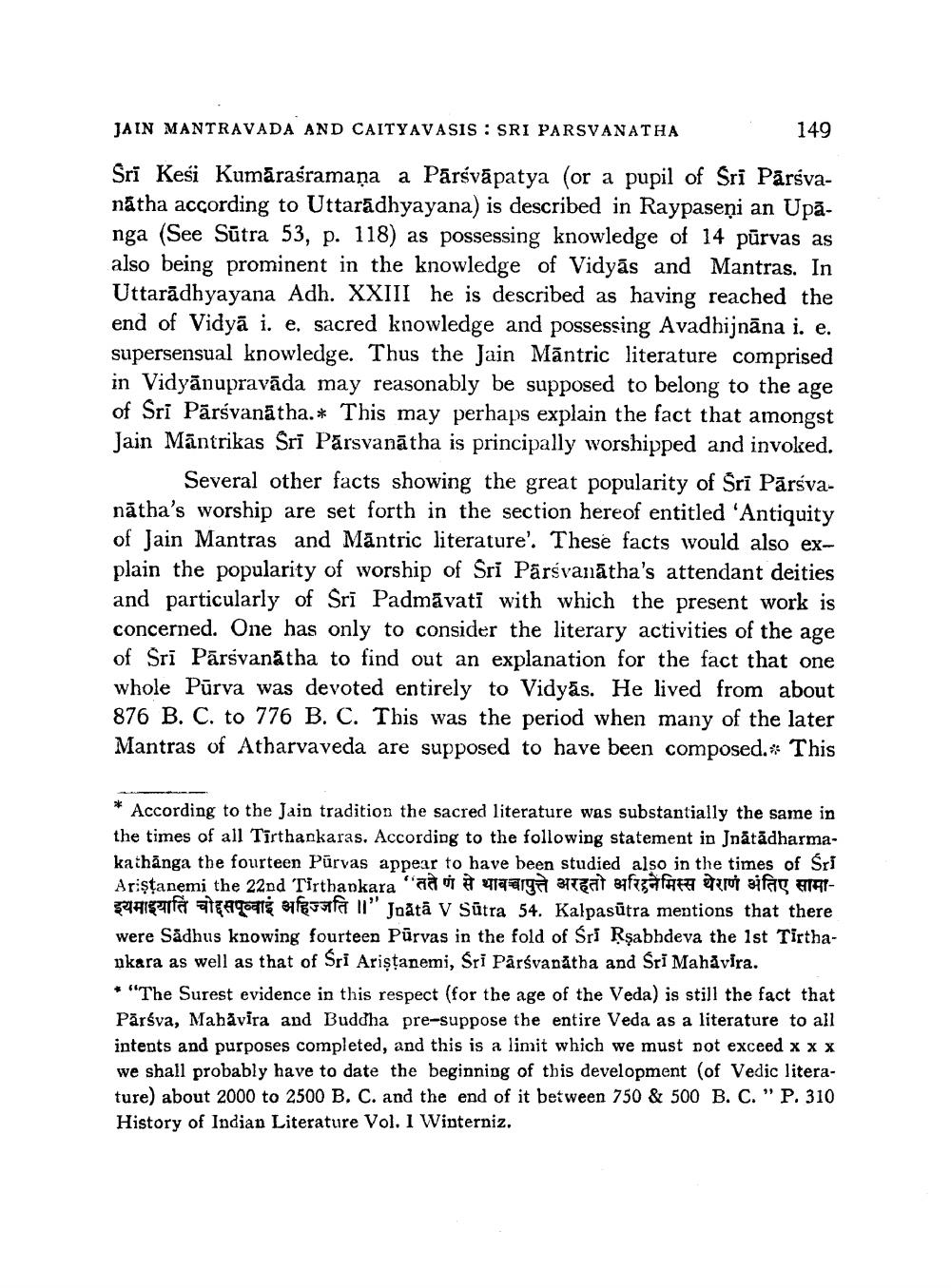________________
JAIN MANTRAVADA AND CAITYAVASIS : SRI PARSVANATHA
149
Sri Kesi Kumārasramaņa a Pārśvāpatya (or a pupil of Sri Pārsvanātha according to Uttarādhyayana) is described in Raypaseņi an Upā. nga (See Sūtra 53, p. 118) as possessing knowledge of 14 pūrvas as also being prominent in the knowledge of Vidyās and Mantras. In Uttarādhyayana Adh. XXIII he is described as having reached the end of Vidyā i. e. sacred knowledge and possessing Avadhijnāna i. e. supersensual knowledge. Thus the Jain Māntric literature comprised in Vidyānupravāda may reasonably be supposed to belong to the age of Sri Pārsvanātha.* This may perhaps explain the fact that amongst Jain Mantrikas Sri Pārsvanātha is principally worshipped and invoked.
Several other facts showing the great popularity of Srī Pārsvanātha's worship are set forth in the section hereof entitled 'Antiquity of Jain Mantras and Māntric literature'. These facts would also explain the popularity of worship of Sri Pārsvanātha's attendant deities and particularly of Sri Padmavati with which the present work is concerned. One has only to consider the literary activities of the age of Sri Pārsvanātha to find out an explanation for the fact that one whole Pūrva was devoted entirely to Vidyās. He lived from about 876 B. C. to 776 B. C. This was the period when many of the later Mantras of Atharvaveda are supposed to have been composed.* This
* According to the Jain tradition the sacred literature was substantially the same in the times of all Tīrthankaras. According to the following statement in Inātädharmakathānga the fourteen Pārvas appear to have been studied also in the times of Sri Ariştanemi the 22nd Tirthapkara "ado 0197197 saat safaga Roparu afas hat321& atragoals afecafa II" Joätā V Sūtra 54. Kalpasūtra mentions that there were Sådhus knowing fourteen Purvas in the fold of Sri Rşabhdeva the 1st Tirthankara as well as that of Sri Ariştanemi, Sri Pārsvanatha and Sri Mahavira. * "The Surest evidence in this respect (for the age of the Veda) is still the fact that Pārsva, Mahävira and Buddha pre-suppose the entire Veda as a literature to all intents and purposes completed, and this is a limit which we must not exceed x x x we shall probably have to date the beginning of this development (of Vedic literature) about 2000 to 2500 B. C. and the end of it between 750 & 500 B. C. " P. 310 History of Indian Literature Vol. I Winterniz.




